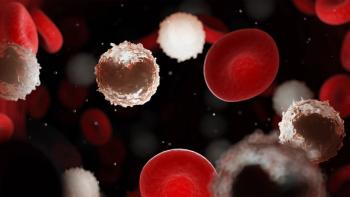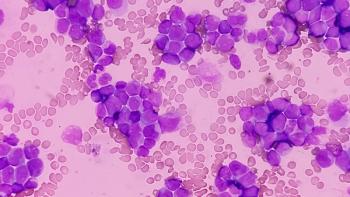
Loop Electrical Excision Procedure Superior to Cryotherapy in Clearing High-Risk HPV Infections

Loop electrical excision procedure (LEEP) demonstrated superior capabilities in clearing high-risk HPV infections in women with cervical intraepithelial neoplasia (CIN2+).
Loop Electrical Excision Procedure (LEEP) was 40% more likely than cryotherapy to clear high-risk human papillomavirus (hrHPV) infections in women with cervical intraepithelial neoplasia (CIN2+), according to a secondary analysis of a randomized clinical trial in Kenya (
In addition, recurrent CIN was 5 times more likely than HPV to be associated with hrHPV detection.
Over a 24-month period, participants who underwent LEEP reported significantly higher hrHPV compared with cryotherapy recipients (HR, 1.40; 95% CI, 1.03-1.90; P=.03). At the 12-month follow-up, a multivariable analysis revealed hrHPV type-specific persistence to be significantly associated with CIN2+ recurrence (adjusted hazard ratio, 4.70; 95% CI, 2.47 -8.95; P <.001). At 12 months, hrHPV testing for recurrent CIN2+ was 93% sensitivity, 46% specificity, 38% positive predictive value, and 95% negative predictive value.
“Cryotherapy is not as effective at clearing hrHPV because it may not achieve therapeutic depth compared with LEEP,” wrote Michael H. Chung, MD, MPH, Emory University, and study authors. “Unlike LEEP, cryotherapy does not excise tissue but causes necrosis through freezing up to a depth of 5 to 7 mm. Cervical dysplasia may be present in deeper tissue than cryotherapy can reach and may be infected with subclinical or latent hrHPV.”
The primary outcomes from this analysis were hrHPV positivity, which was defined as having 1 of 12 possible hrHPV types, (16, 18, 31, 33, 35, 39, 45, 51, 52, 56, 58, 59) as well as disease recurrence, which meant a CIN grade 2 or higher with cervical biopsy.
Between June 2011 and September 2016, researchers screened 5,330 HIV- positive women through papanicolaou (PAP) testing. High-grade squamous intraepithelial lesions were found in 738 (13.8%) of the participants, and CIN 2+ subsequent colposcopy-directed biopsy was detected in 512 (9.6%) of participants.
The study included a total of 354 HIV-positive women with CIN2+. Among these participants, in the cryotherapy arm, median age was 37 years and baseline hrHPV prevalence was 90% (160 out of 177). In the LEEP arm, median age was 38 years and hrHPV prevalence was 94%. The randomized women received follow-ups every 6 months for 2 years, through hrHPV cervical swab and Pap test with cervical biopsy.
Between the 354 women with confirmed CIN2+ on colposcopy-directed biopsy as well as an hrHPV result at baseline testing, 177 women (50%) were treated with cryotherapy and 177 women (50%) were treated through LEEP. Sociodemographic and HIV characteristics were consistent between the two treatment groups; the average monthly household income was less than $150/month in both cohorts (62% vs 64%; P=.79) and immunocompromising was similar (CD4 count < 250 cells/mm3; 29% vs 27%; P = .75). In addition, the number of participants pretreated with ART for at least 2 years was comparable between the arms, (51% vs 57%; P = .20).
Researchers concluded that the results of the secondary analysis were consistent with those of the original clinical trial. LEEP has demonstrated clinical benefit over cryotherapy if and when this method is available and accessible in low-and middle-income countries. Testing for hrHPV following cervical treatment is potentially valuable in ruling out recurrent cervical disease among women living with HIV.
“These results correlate with the primary outcome analysis of the RCT, which demonstrated that LEEP was also better than cryotherapy in preventing recurrent CIN2+,” authors wrote. “Taken together, they demonstrate the superior treatment efficacy of LEEP over cryotherapy among women living with HIV.”
The study authors acknowledged a number of limitations. The first was that the secondary analysis assessed the findings of a trial conducted at a singular site in Kenya with 1 study clinician overseeing both the cryotherapy and LEEP procedures. Consequently, further research is needed to determine whether these study results extend to the rest of Kenya, or even other countries and regions.
Additionally, the study follow-up period was 2 years, which, according to the researchers, is too short a period to ascertain if hrHPV detection and CIN result in cervical cancer or mortality. This limitation is exacerbated by the fact that many participants were pretreated with ART, which might impact these outcomes. Future research should seek to extend the follow-up period to gain insight to the long-term implications of hrHPV persistence after treatment on cervical cancer and mortality among women living with HIV.
Reference
Chung MH, De Vuyst H, Greene SA, et al. Human papillomavirus persistence and association with recurrent cervical intraepithelial neoplasia after cryotherapy vs loop electrosurgical excision procedure among HIV-positive women. JAMA Oncol. August 5, 2021. Accessed September 8, 2021. doi:10.1001/jamaoncol.2021.2683
Newsletter
Knowledge is power. Don’t miss the most recent breakthroughs in cancer care.
















































































